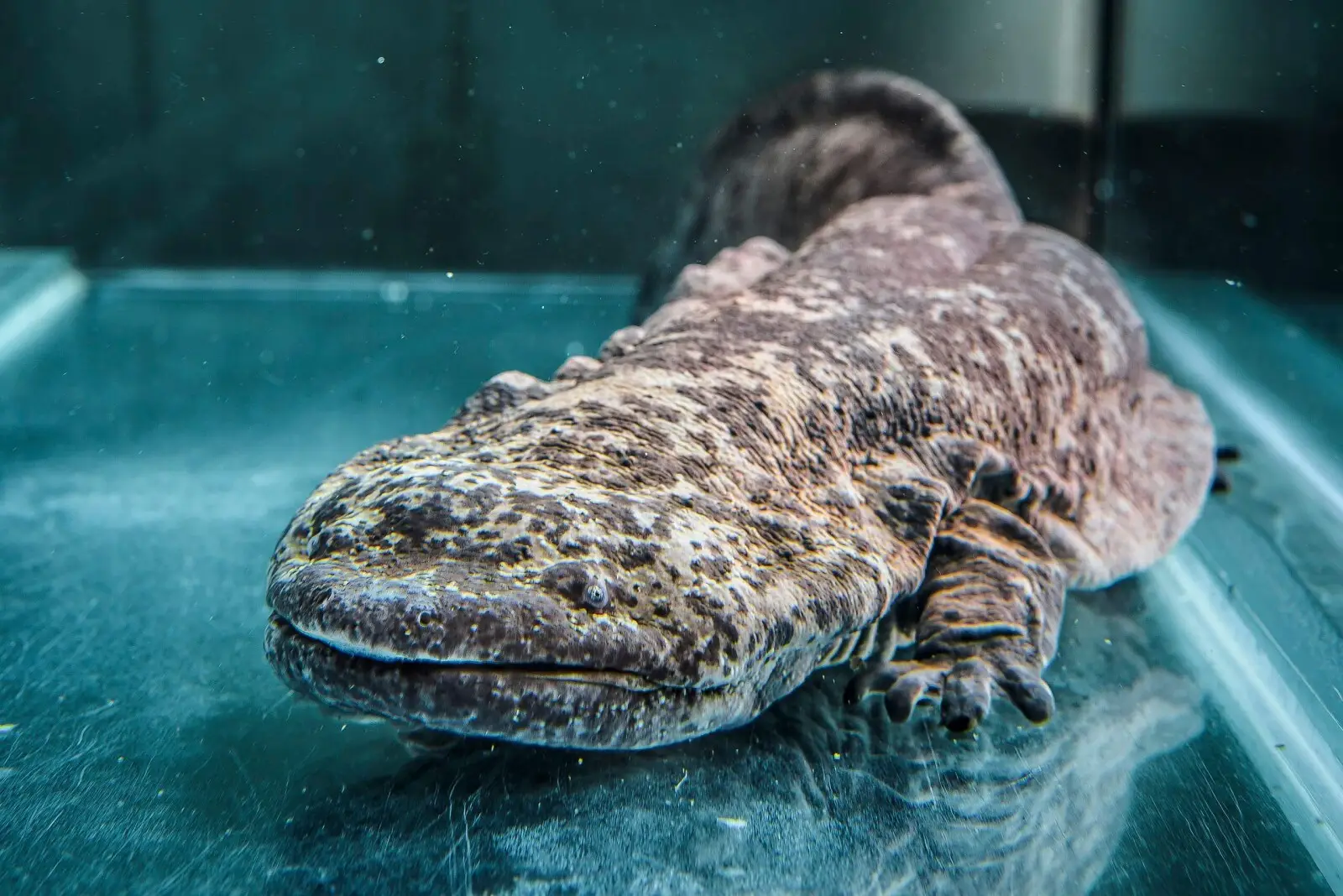preahvihearhotel.com – The Chinese giant salamander (Andrias davidianus) is the largest amphibian in the world, reaching lengths of up to 1.8 meters (6 feet) and weighing over 30 kilograms (66 pounds). Native to the cool, fast-flowing streams and rivers of China, this ancient species is a fascinating and elusive creature. Despite being critically endangered, it plays a crucial role in its ecosystem as a top predator. In this article, we explore the diet and feeding behavior of the Chinese giant salamander and how it captures and consumes its prey.
Hunting Techniques and Feeding Behavior
The Chinese giant salamander is a nocturnal predator, meaning it hunts primarily at night. With poor eyesight, it relies on other senses, particularly its highly sensitive lateral line system, to detect vibrations and movement in the water. This system helps the salamander locate prey in the murky or dark waters it inhabits.
As an opportunistic feeder, the Chinese giant salamander consumes a wide variety of prey, including aquatic animals and even land-based creatures that venture near the water. It has a large, powerful mouth that allows it to swallow prey whole, using a suction feeding technique to quickly engulf its target.
Main Diet Components
The diet of the Chinese giant salamander varies depending on its age, size, and the availability of prey in its environment. As a carnivorous species, its diet is composed mainly of animal matter, including:
1. Fish
- Fish are a primary food source for the Chinese giant salamander, especially small to medium-sized species that are abundant in fast-flowing rivers and streams. The salamander lies in wait for passing fish, using its quick strike and suction feeding method to capture them.
- Types of fish consumed include river-dwelling species such as minnows, trout, and other freshwater fish.
2. Crustaceans
- Crustaceans, such as crabs and freshwater shrimp, are another key part of the giant salamander’s diet. These hard-shelled creatures are plentiful in the salamander’s habitat and provide essential nutrients, including proteins and fats.
- The salamander is capable of cracking open the shells of crabs with its powerful jaws, allowing it to feed on the soft tissues inside.
3. Amphibians
- The Chinese giant salamander is known to prey on smaller amphibians, including frogs, toads, and other salamanders. Amphibians are typically more active at night, making them ideal prey for the nocturnal Chinese giant salamander.
- In addition to amphibians, the salamander may also consume their eggs, particularly during the breeding season when they are more available.
4. Insects and Worms
- Aquatic and semi-aquatic insects, such as beetles, dragonfly larvae, and water bugs, make up a significant portion of the Chinese giant salamander’s diet, particularly for juvenile salamanders.
- Worms, including earthworms and aquatic worms, are also consumed, particularly in soft sediment areas where they are abundant.
5. Small Mammals and Birds
- Although fish and amphibians form the bulk of its diet, the Chinese giant salamander is also known to prey on small terrestrial animals that come close to the water’s edge, such as rodents and small birds.
- These animals are swallowed whole, similar to its aquatic prey, and are likely eaten opportunistically.
Juvenile Chinese Giant Salamander Diet
The diet of juvenile Chinese giant salamanders differs slightly from that of adults due to their smaller size. Young salamanders focus on smaller prey, such as:
- Insect larvae and small aquatic invertebrates
- Tadpoles and small fish
- Crustaceans, such as shrimp and small crabs
As they grow, their ability to catch and consume larger prey increases, leading to a shift in their diet toward more substantial food sources.
Feeding Frequency and Energy Requirements
Chinese giant salamanders are cold-blooded, which means their metabolic rate is lower than that of warm-blooded animals. As a result, they do not need to eat frequently and can survive for long periods without food. In the wild, they may go several days or even weeks between meals, depending on the availability of prey and environmental conditions.
During the warmer months, when food is more plentiful, the salamander will feed more frequently to build up energy reserves. In colder months, its activity level decreases, and it may enter a state of torpor (a form of hibernation), during which its feeding rate slows considerably.
Predator and Prey: The Salamander’s Role in the Ecosystem
As a top predator in freshwater ecosystems, the Chinese giant salamander plays an important role in regulating the populations of various aquatic species, including fish, amphibians, and invertebrates. By controlling the numbers of these animals, the salamander helps to maintain balance in its habitat.
Despite being a formidable predator, the Chinese giant salamander is also preyed upon by humans and occasionally by larger animals, such as otters, that share its habitat. Human hunting and habitat destruction have significantly reduced its numbers, making it critically endangered.
Conservation and Habitat Challenges
The Chinese giant salamander’s diet and survival are closely linked to the health of its freshwater habitat. Unfortunately, habitat degradation, pollution, and overfishing have impacted the availability of prey in many regions. Conservation efforts aimed at protecting clean water habitats and restoring the salamander’s natural prey sources are critical to its long-term survival.
Conclusion
The Chinese giant salamander is a remarkable nocturnal predator with a diverse diet that includes fish, crustaceans, amphibians, and even small mammals. Its ability to feed on a wide range of prey, combined with its unique feeding adaptations, allows it to thrive in fast-flowing rivers and streams. As a key species in its ecosystem, the Chinese giant salamander’s role as both predator and prey highlights the importance of preserving its natural habitat to ensure the survival of this ancient amphibian.
